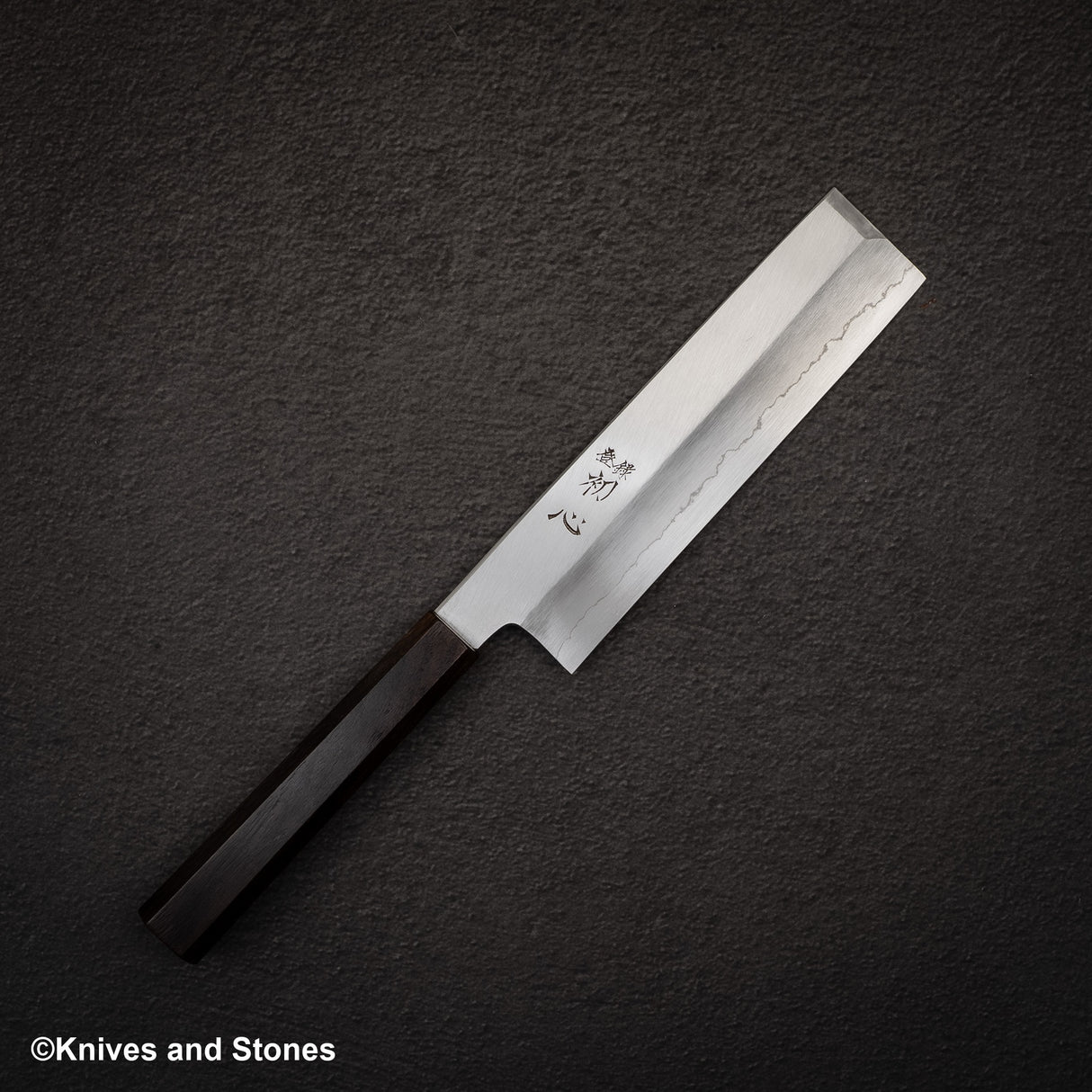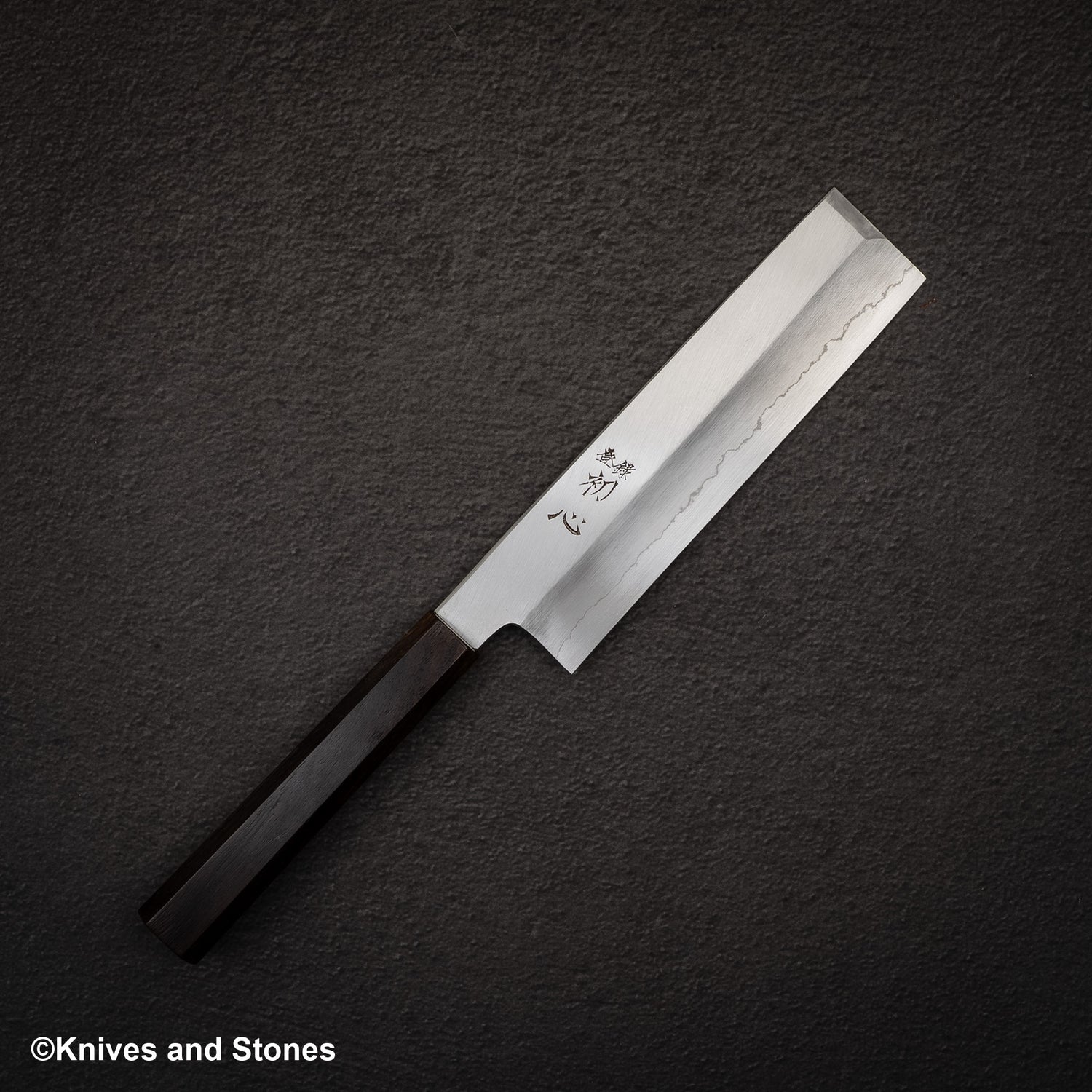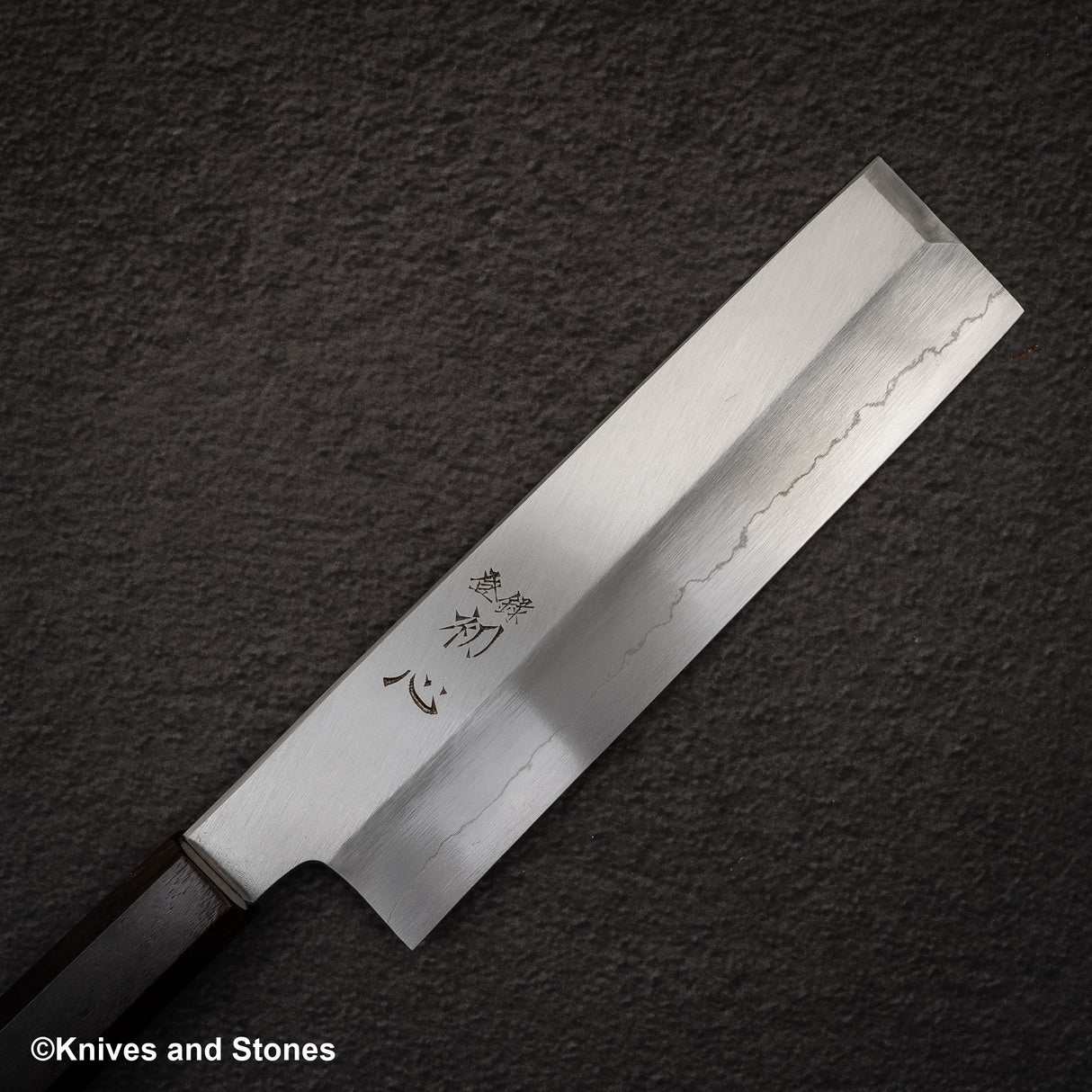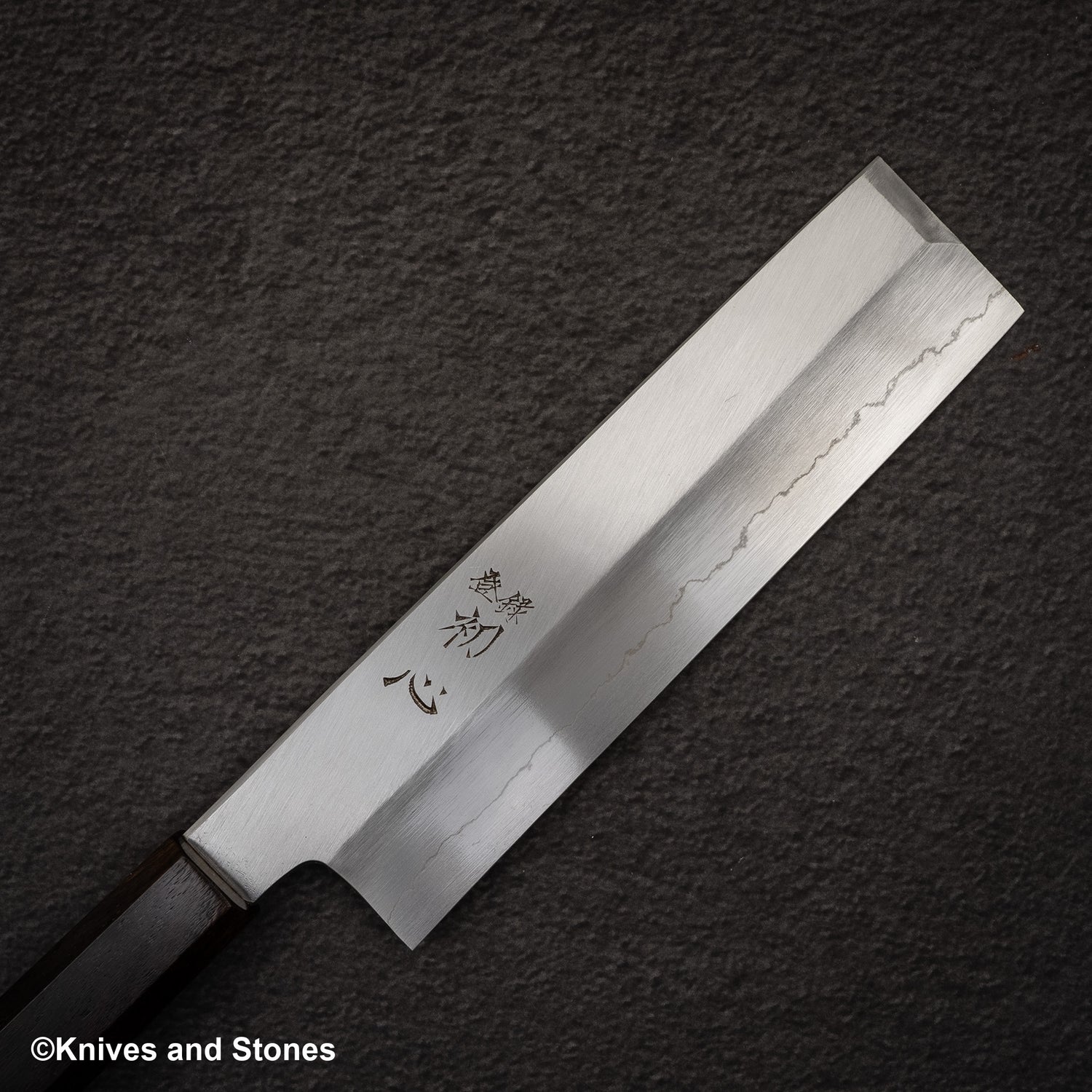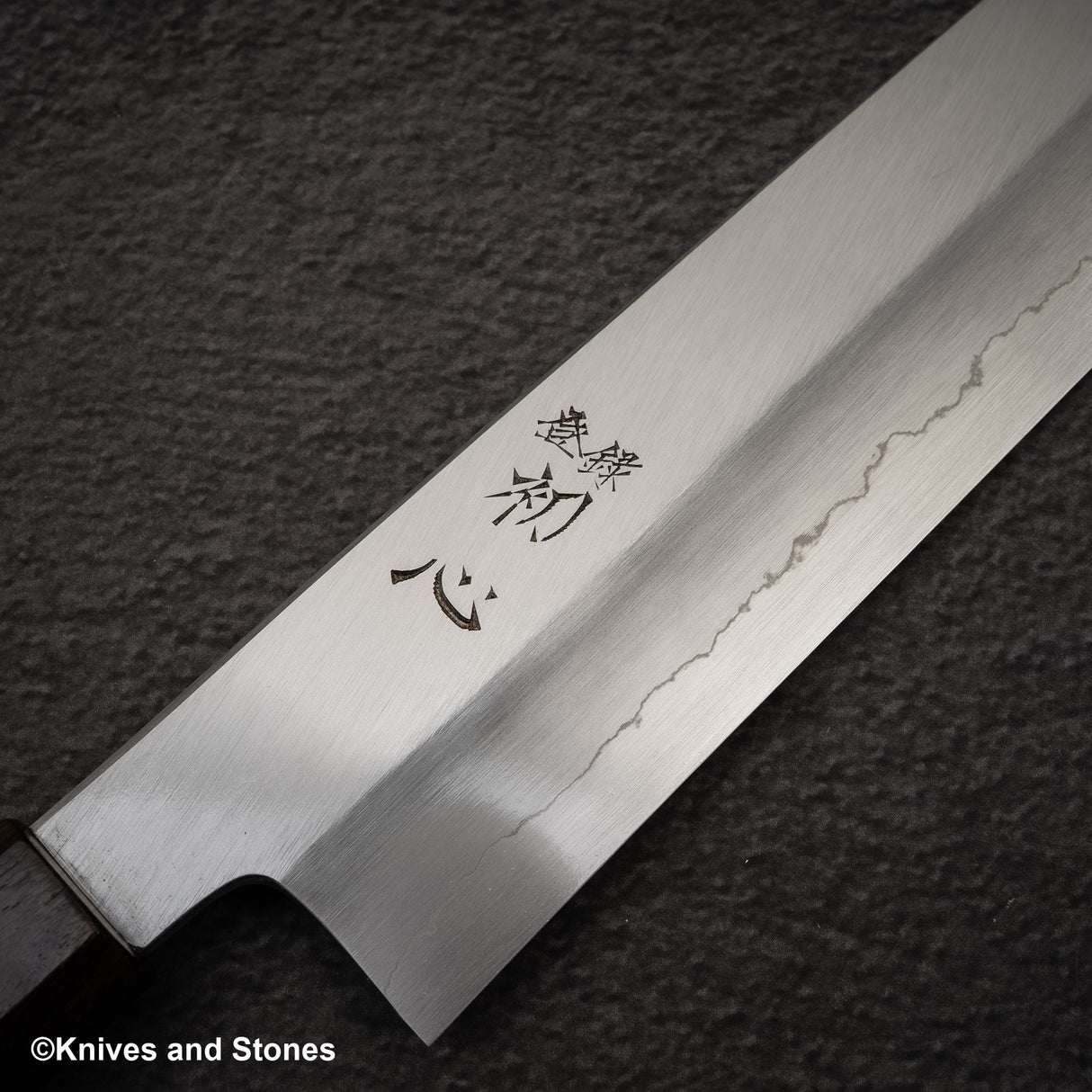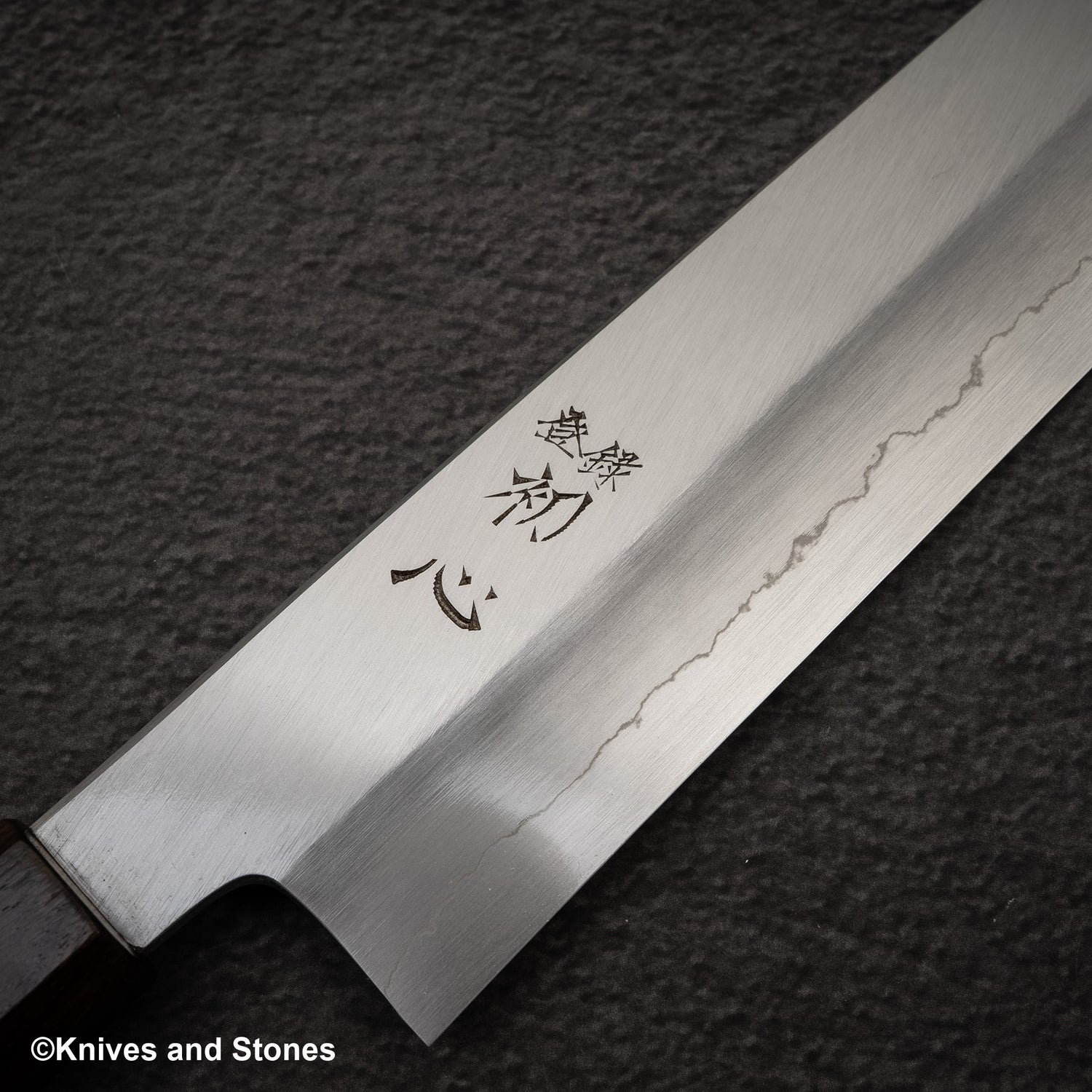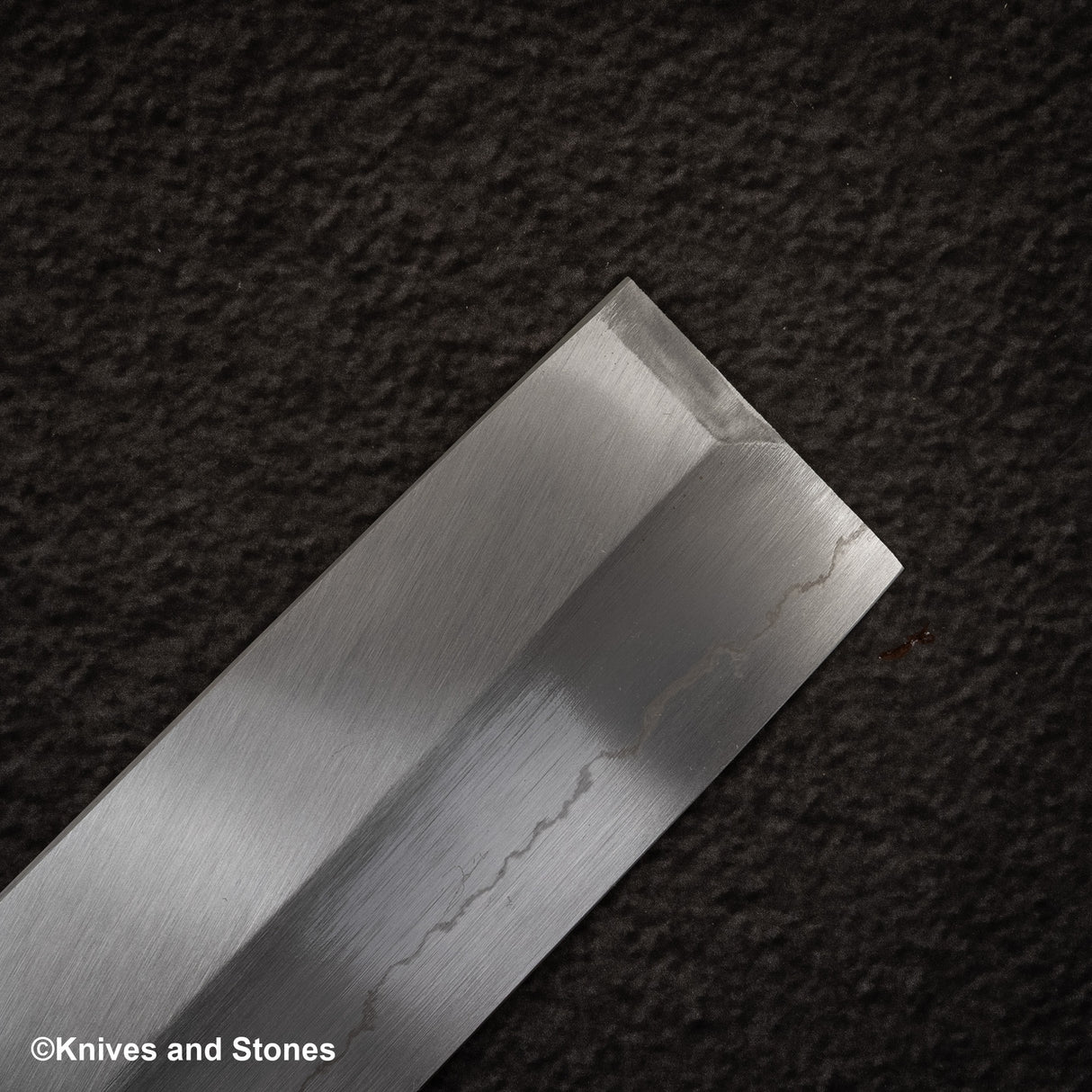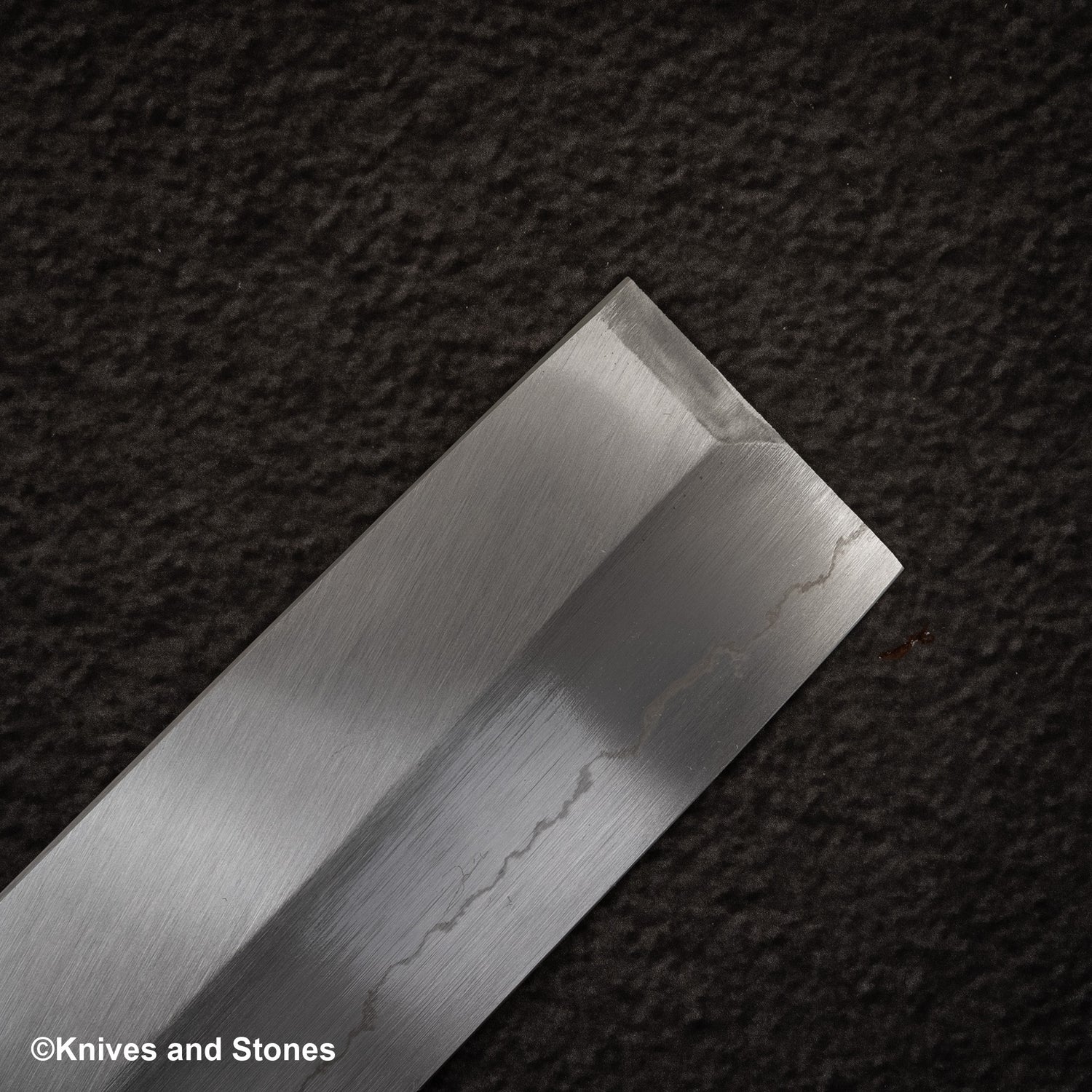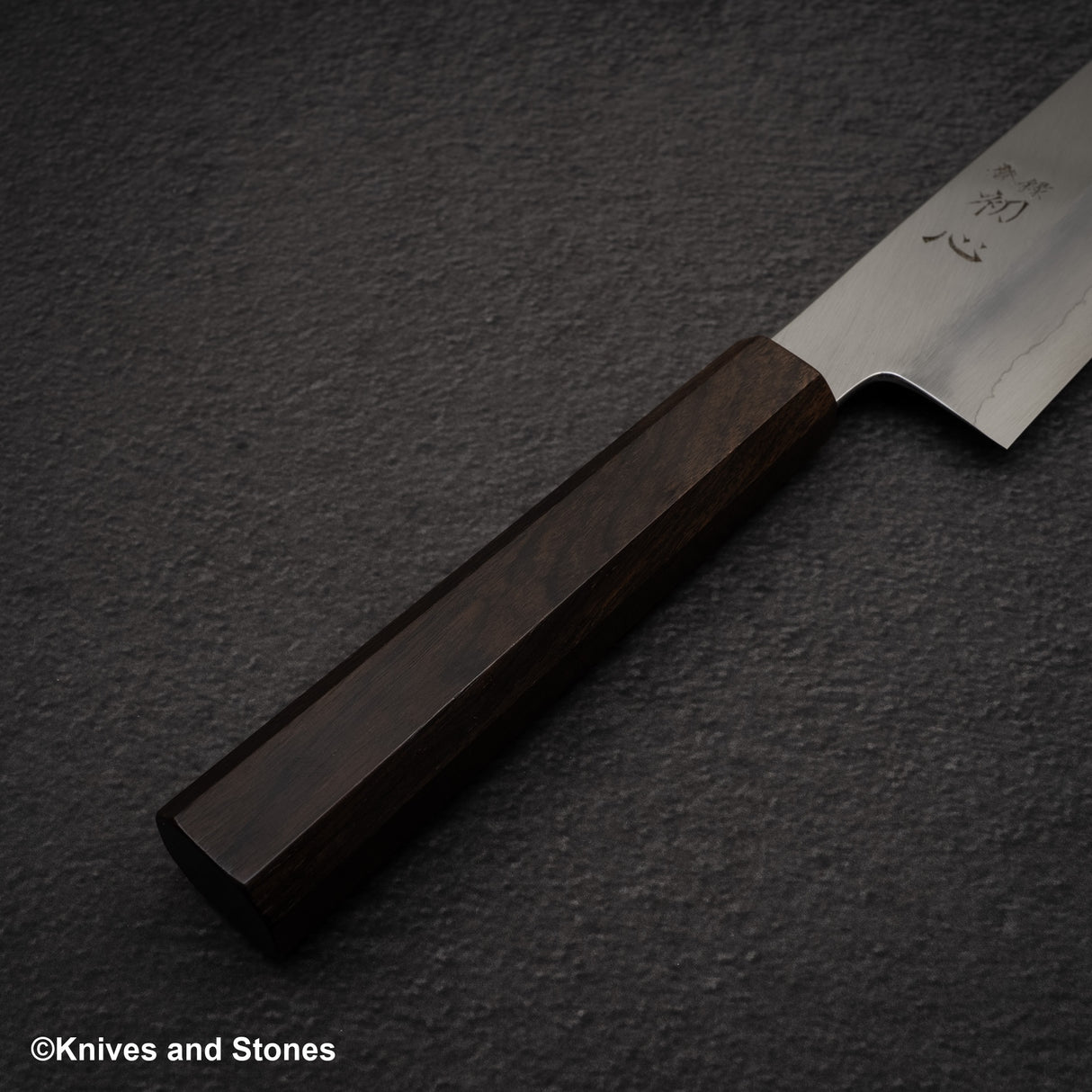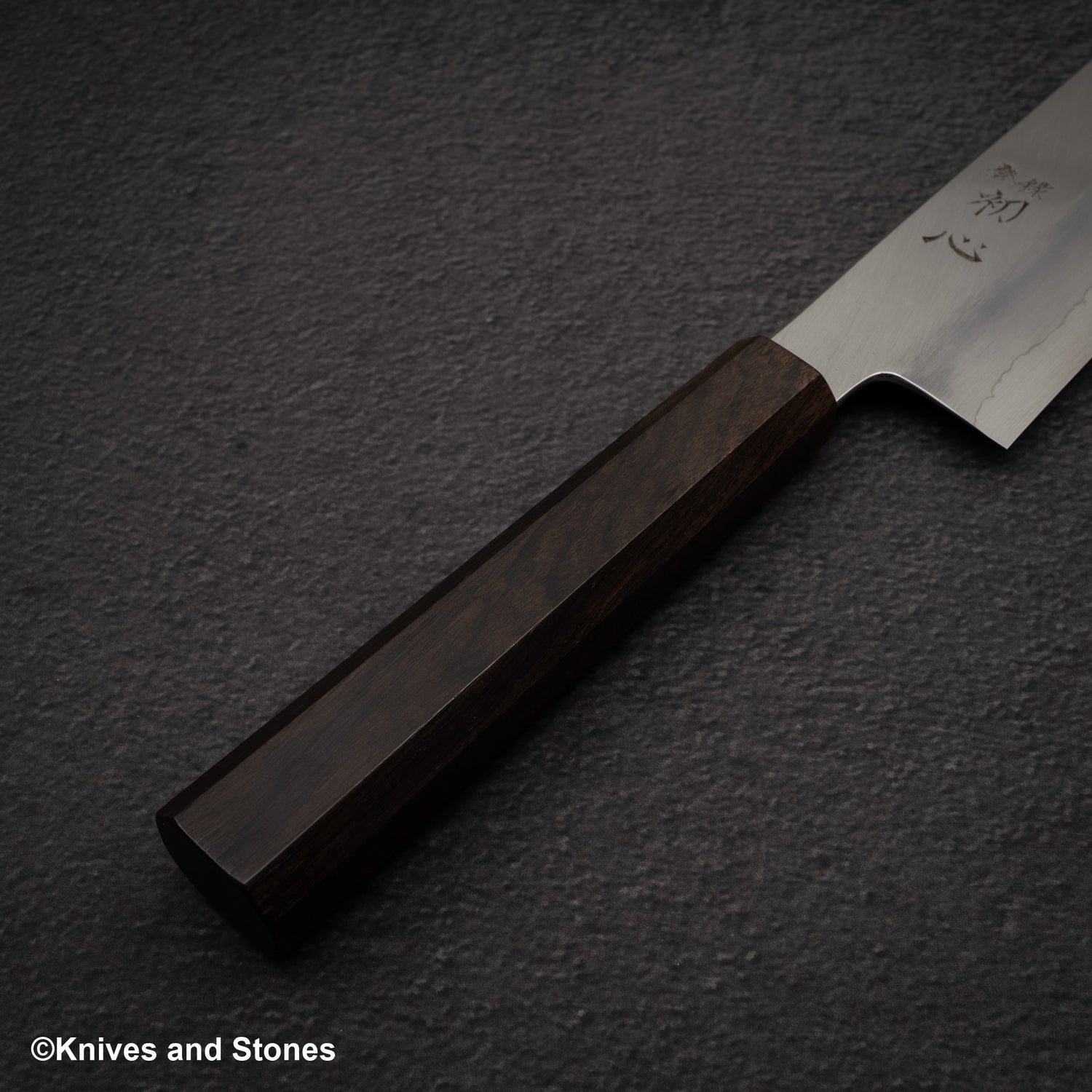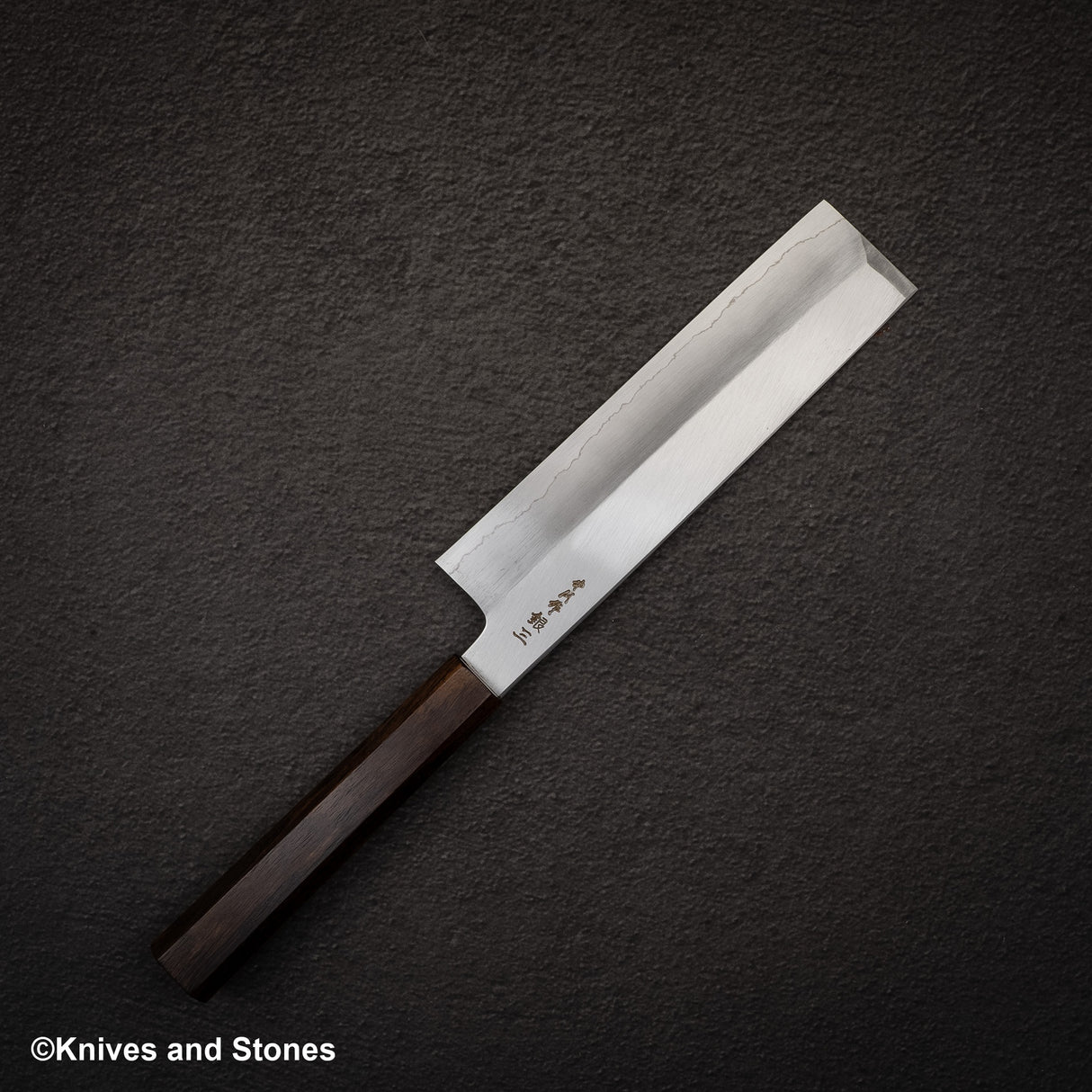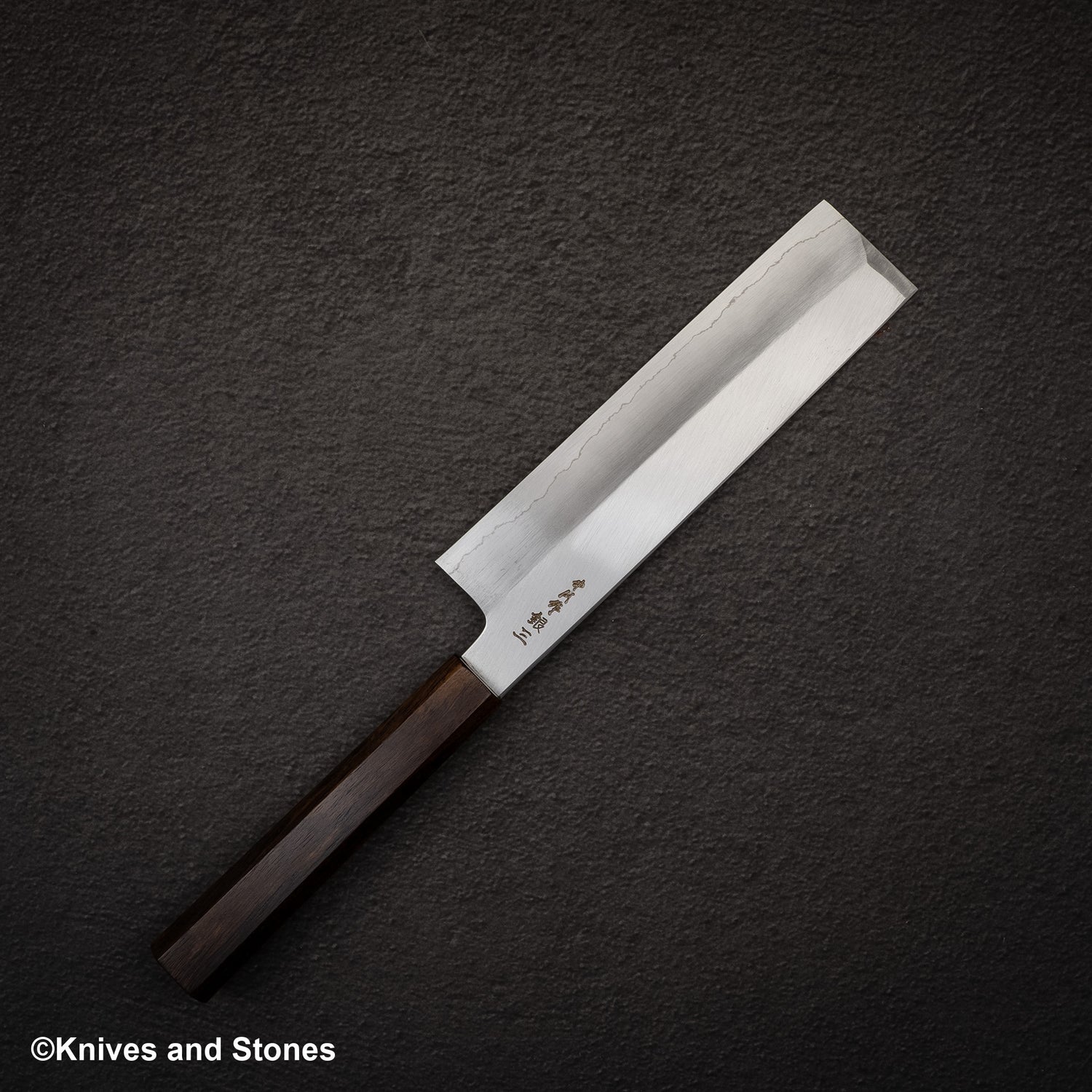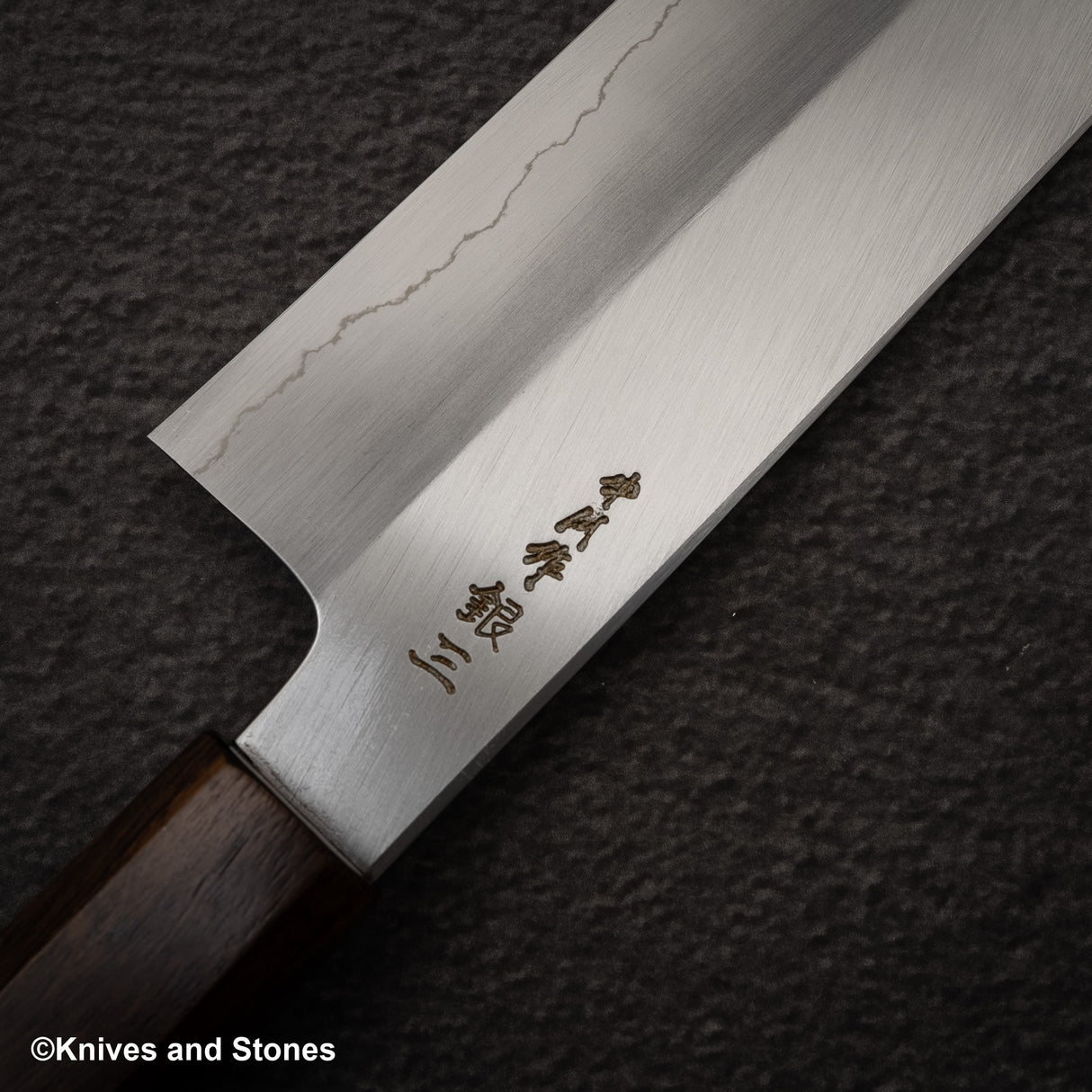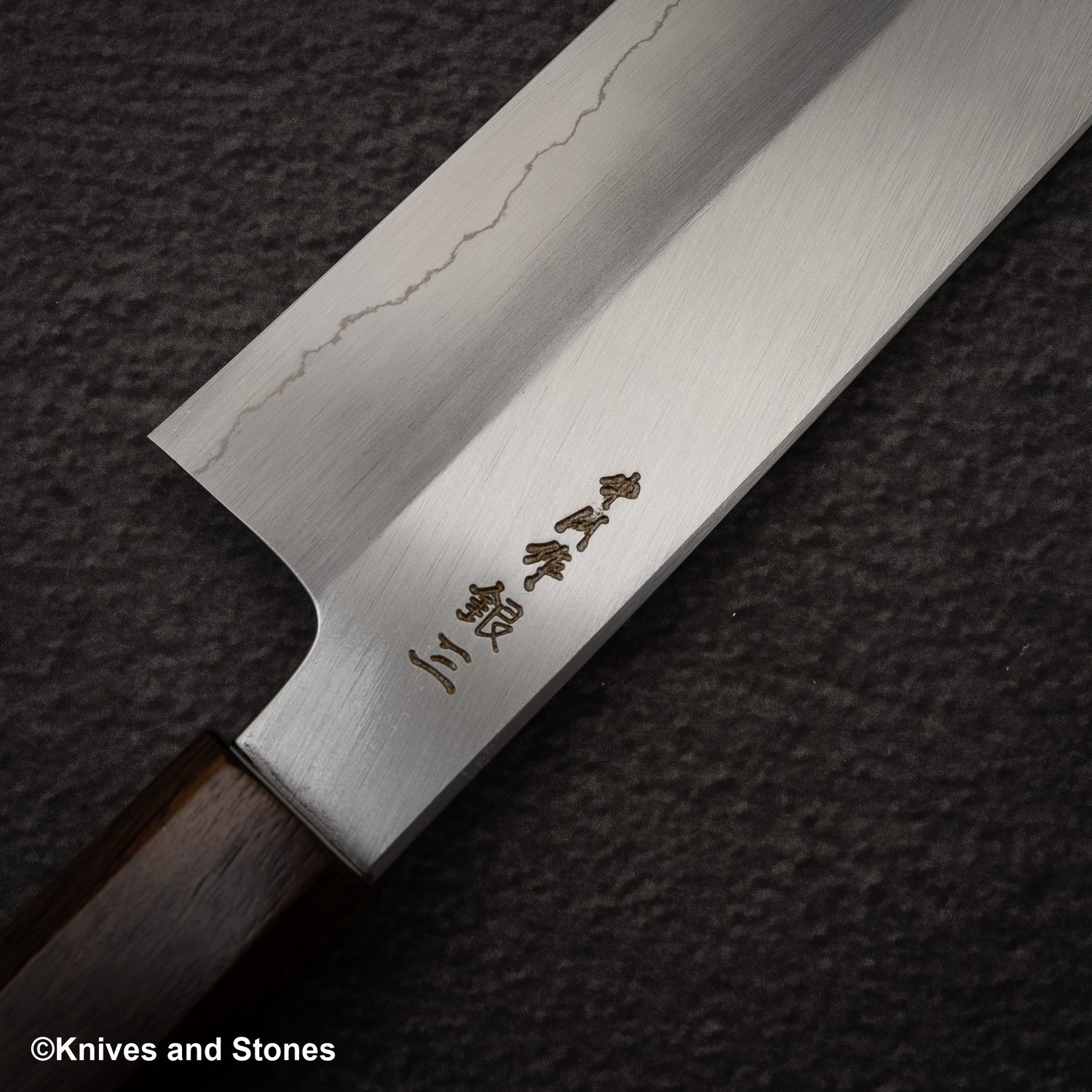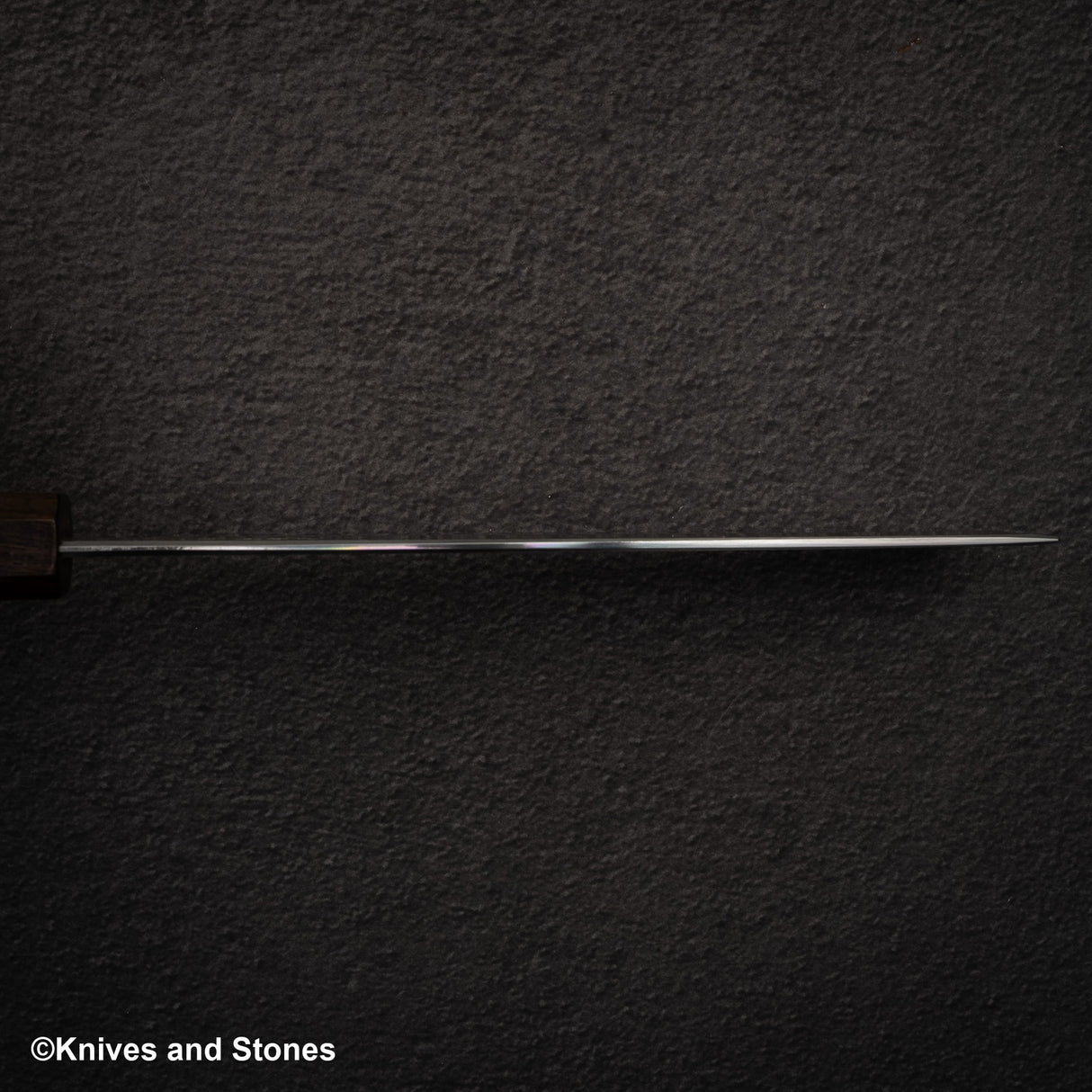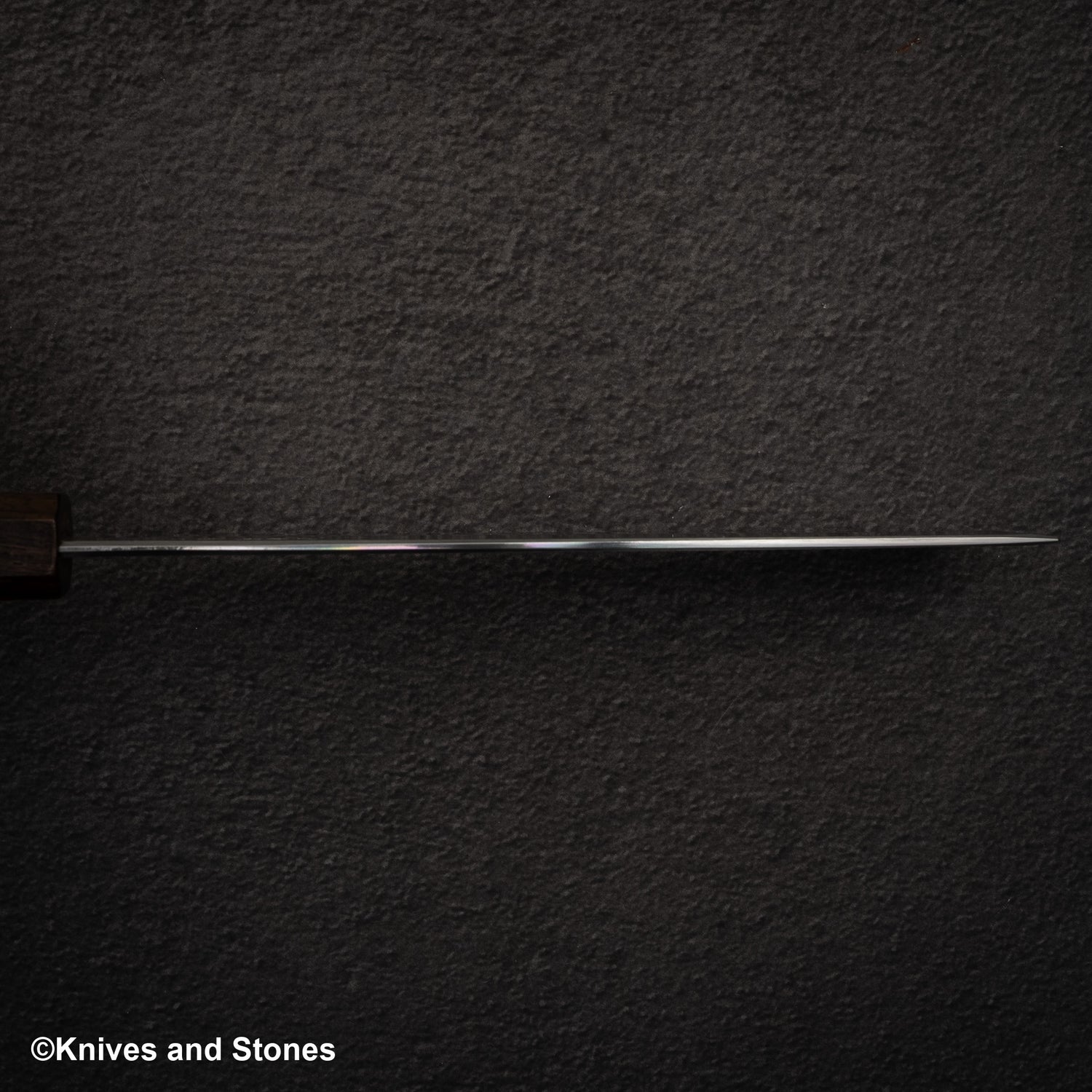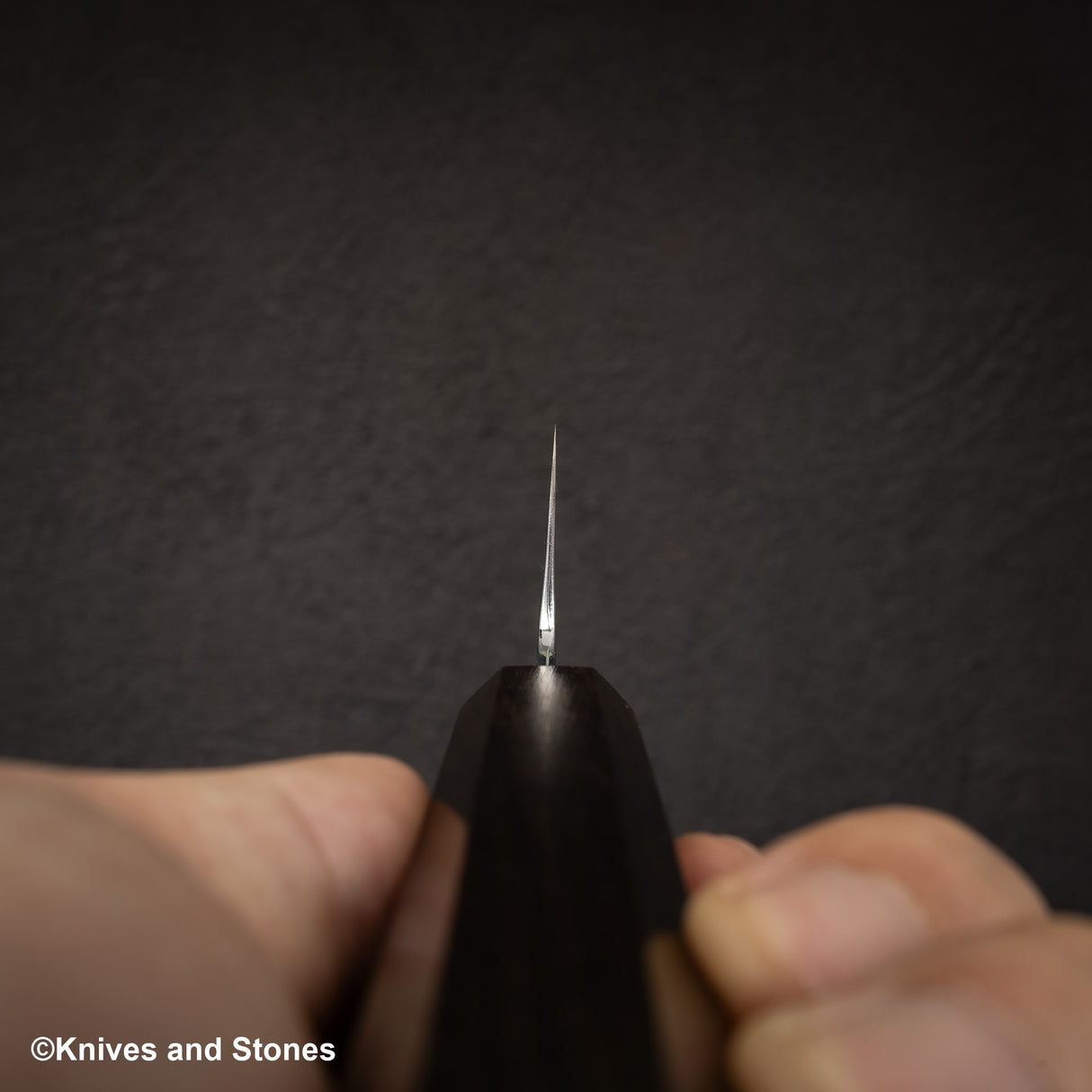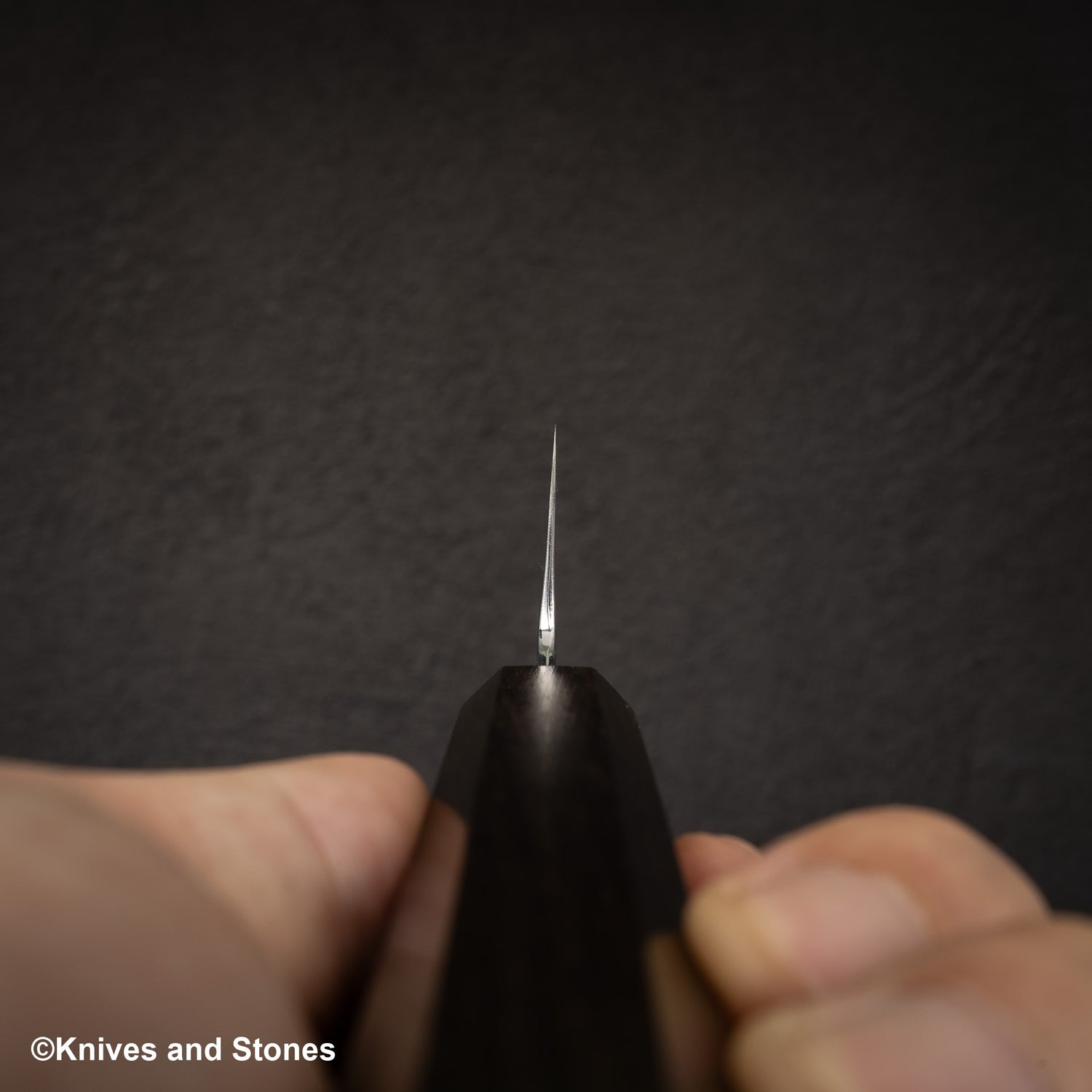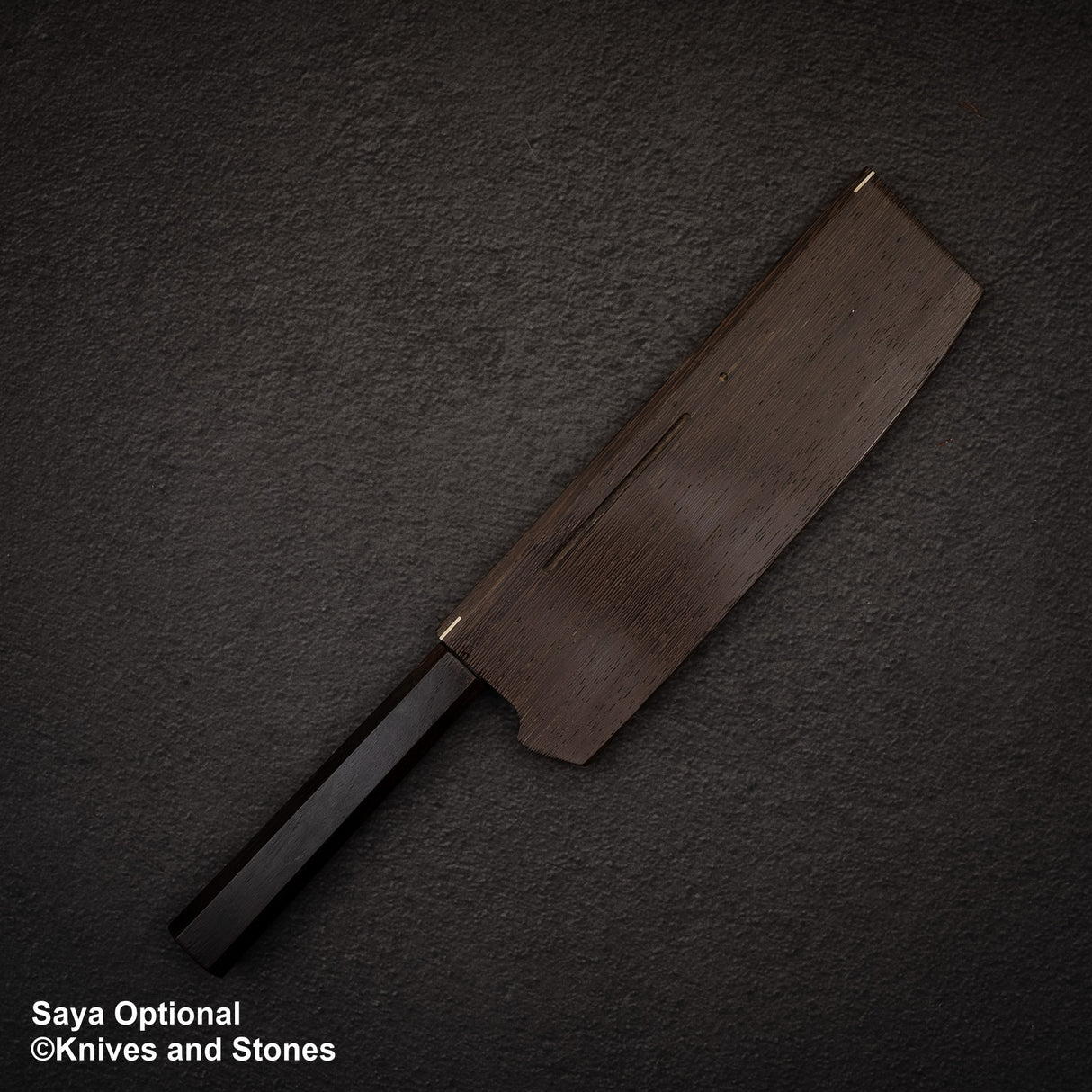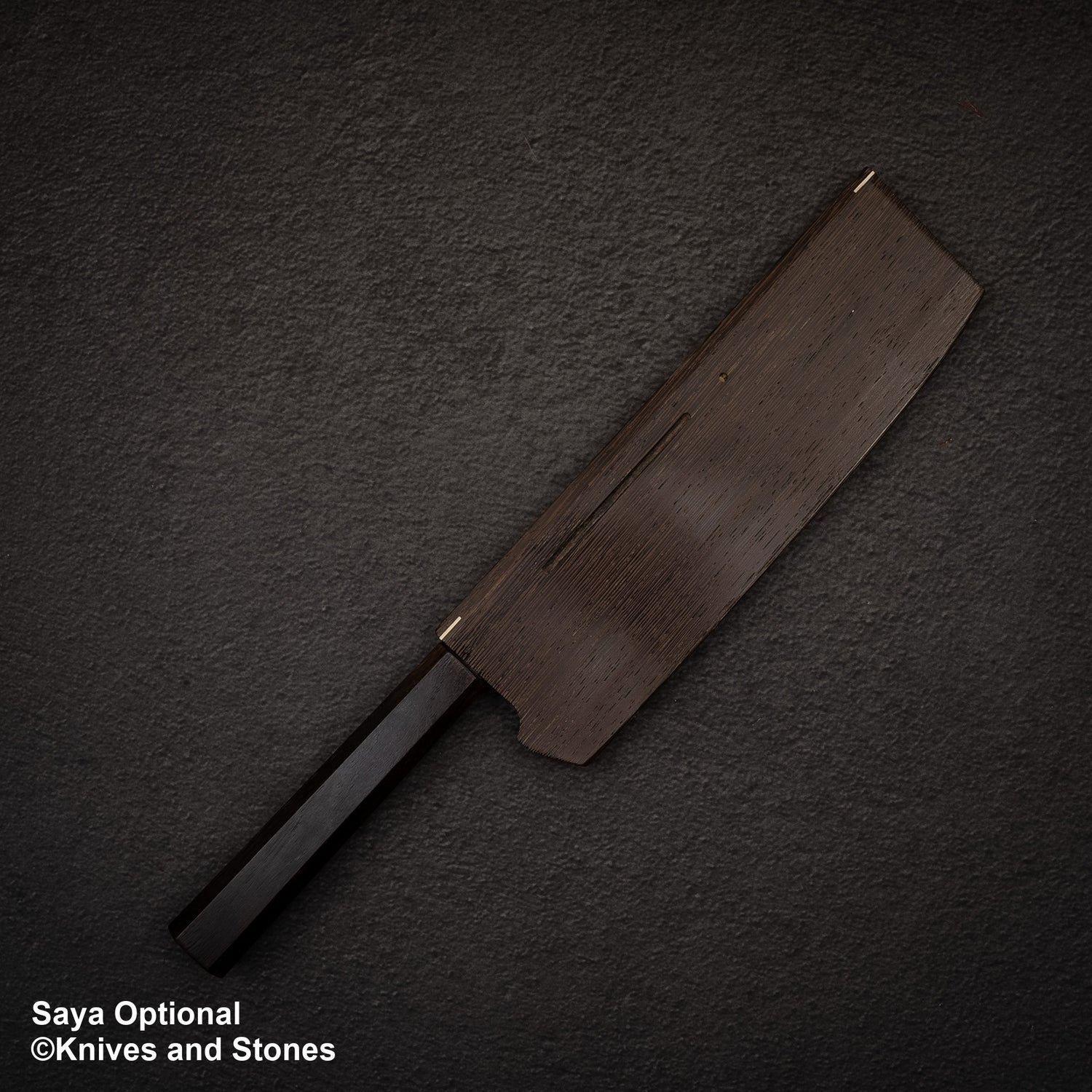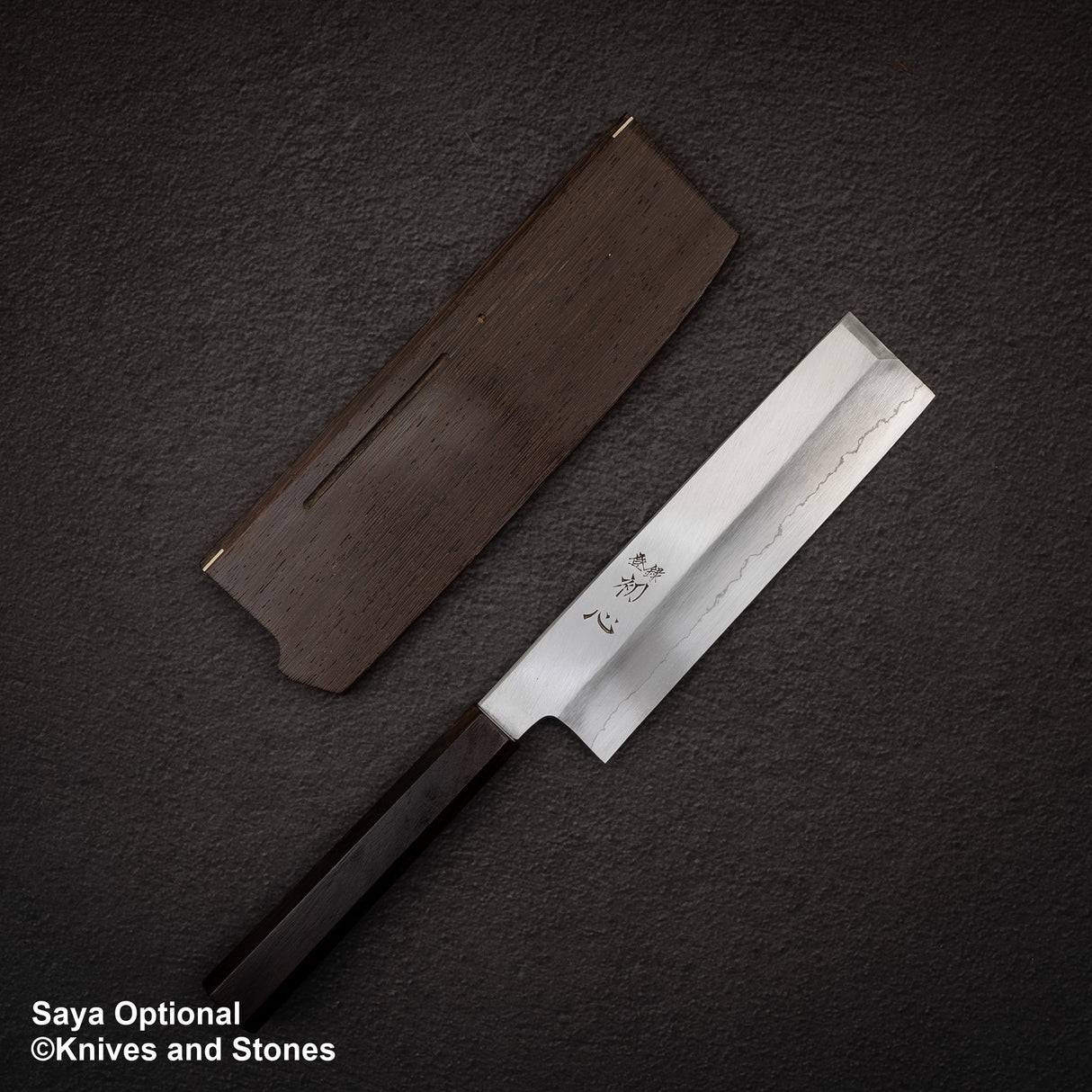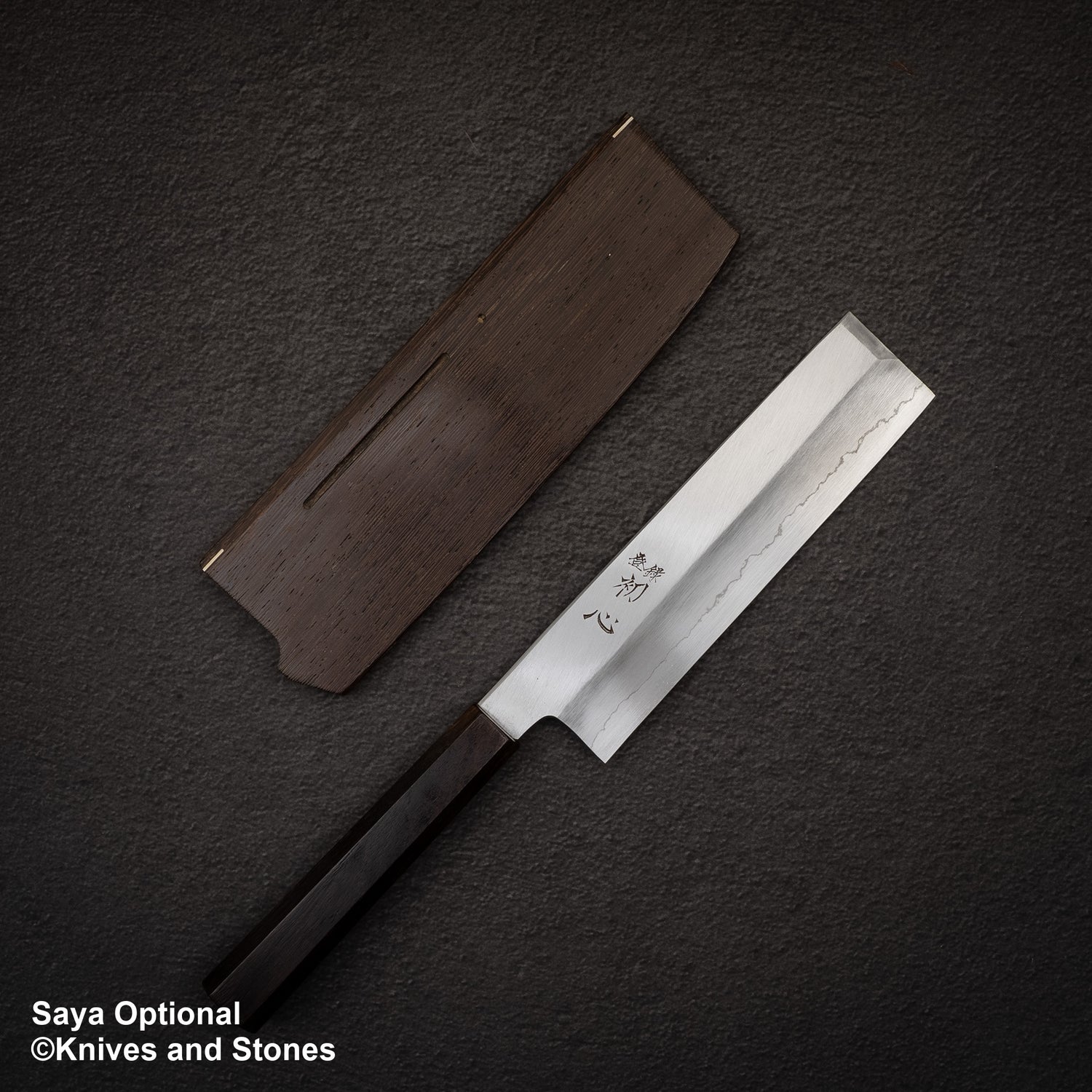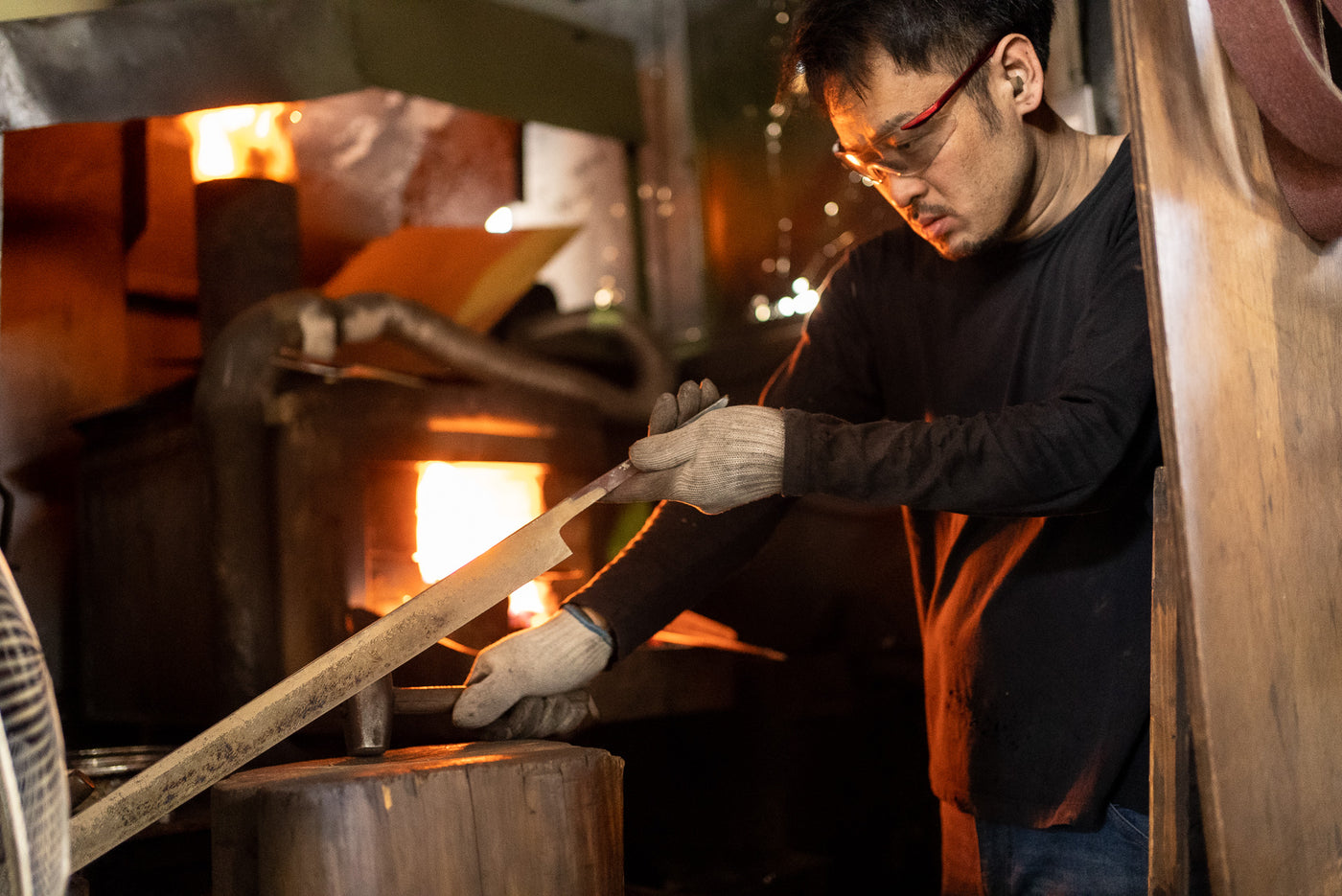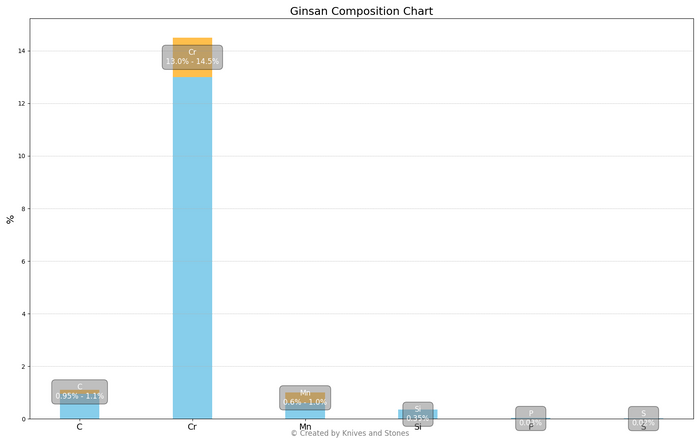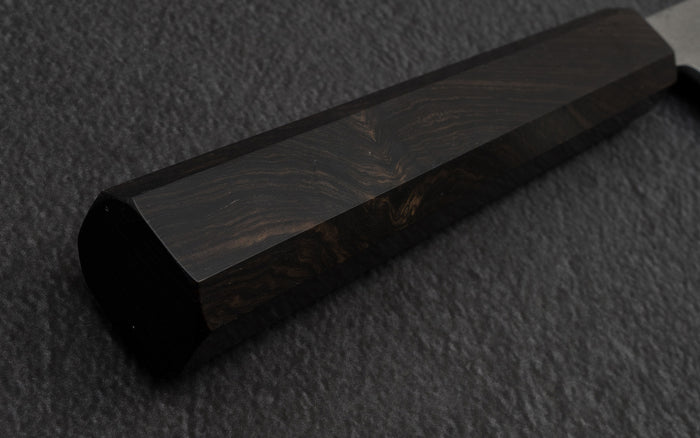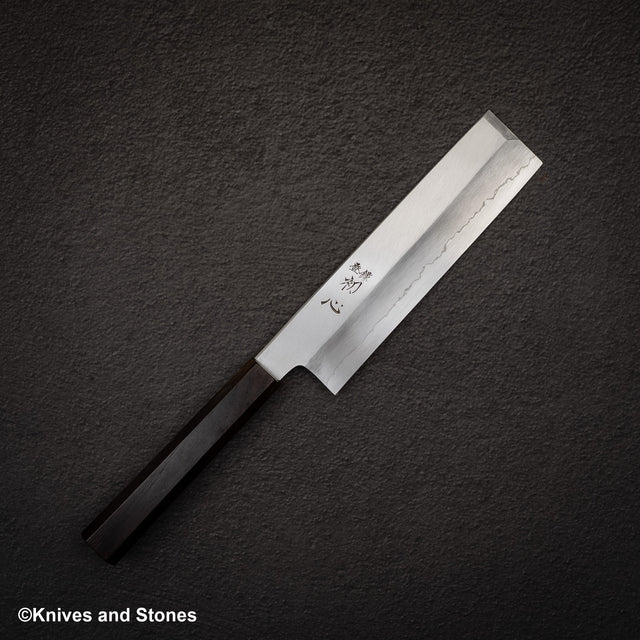Nakagawa Hamono | 庫存單位:
NAKA_G3KA_NA180
中川銀山霞 寬斜面 Nakiri 180mm
正常價格
$9,893.00
單價
/
不可用
中川銀山霞 寬斜面 Nakiri 180mm 已缺貨,一旦有貨就會出貨。
無法載入取貨日期
Detailed Specifications
| Line | 初心 By 中川 銀三 寬刃霞 |
| Profile | 菜刀(Nakiri) |
| Bevel Type | 雙斜面 |
| Weight | 172 g | 6.1 oz |
| Edge Length | 167 mm | 6 37/64″ |
| Heel Height | 45 mm | 1 49/64″ |
| Width @ Spine | 2.4 mm | 3/32″ |
| Width @ Mid | 2.2 mm | 3/32″ |
| Width @ 1cm from Tip | 2.1 mm | 5/64″ |
| Steel | 銀三 / 銀紙三號 | 不鏽鋼 |
| Blade Construction | 三枚 - 不鏽鋼夾層 |
| Hardness (HRC) | 60 - 62 |
| Surface Finish | 磨光 |
| Handle | 八角烏木 |
| Region | 堺 |
| Best for |
|

| Pros | Cons |
|
|
|
Care Instruction
- Don't cut hard things! Japanese knives are brittle so bone hacking is a NO NO!
- Wash with neutral detergent after use, and wipe dry;
- Please don't wash knife with dishwasher, it will damage the wood handle;
- Be careful not to leave the knife close to a heat source for a long time;
- It is a lot more dangerous to cut with a blunt knife than a sharp knife!
- It is best to sharpen a Japanese knife regularly on a waterstone. Error: Steel nature unknown

